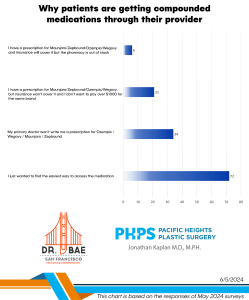Concierge medicine is a model of providing medical care in the office setting that has taken on many different meanings over time. The genesis of this new model developed after years of declining reimbursement, forcing doctors to see more patients for less time, just to cover overhead. To reverse the trend, some primary care doctors sought a new way to provide personalized, time intensive care to fewer patients. Enter the concierge practice, also known as direct primary care or a boutique practice.
The lower reimbursement rates from insurance companies and higher costs led doctors to necessarily see patients every 8 to 10 minutes, according to an interview on SFGate, to make up for lost revenue. To boost income, while at the same time focusing on fewer patients, a concierge practice charges an annual fee for uncovered services like after-hours access to the doctor, same day appointments and additional wellness visits, tests and coordination of care with specialists. While all concierge practices have the annual fee in common, they can differ greatly in other aspects.
Some concierge practices also bill your insurance company for services that are considered “covered,” or reimbursable by your insurance policy. Others don’t bill insurance at all and rely on the annual membership fee to cover costs. Still other practices continue to have a hybrid model wherein the doctors have concierge and non-concierge patients in the same practice, i.e. patients that pay an annual fee and receive uncovered services (after-hours physician access) and patients that don’t pay an annual fee, receiving only the standard covered services.
In the primary care setting, reduced insurance reimbursements increased pressure to see more patients for less time, thus driving doctors to the concierge model. But the concierge model can also have a beneficial impact on cosmetic surgery practices even though similar pressures are not present. For cosmetic surgery, declining insurance reimbursement is a moot point. All cosmetic services are considered uncovered services and therefore, not covered by insurance. However, the essence of what the concierge medical practice accomplishes – a welcoming, personalized, all-services-included mentality – can be applied to a cosmetic practice.
Patients choosing to have cosmetic services must pay out-of-pocket for all services. This “nickel and dime” approach can make the consumer feel more like a customer than a patient. In the past, after treating someone with Botox/Xeomin or a filler, I wanted to suggest they also start a skin care regimen to keep their skin healthy rather than try and fix problems after the skin damage had already occurred. But each recommendation for additional services requires them to purchase more which made me feel like more like a salesman than a physician. So I started to consider the concierge approach like my primary care colleagues.
First I wanted to see what other plastic surgeons were doing. When searching the internet, I found that most plastic surgeons that use the term “concierge” in their practice had a different connotation. It wasn’t a complete package offering or an overall approach to the patient’s cosmetic needs. What I found was that most concierge cosmetic surgery practices focused on out-of-town patients traveling for surgery and concierge was more about offering assistance with travel, transportation to and from the airport and office and hotel. Concierge in this case meant the doctor’s office doubled as a travel agency!
This was not what I was trying to accomplish. Sure I’m happy to help with travel arrangements and make the out-of-town patient at ease but there’s more to be done. My goal was to give the patient a total package of services (surgery, injectibles, skin care, aesthetician), greater access to their doctor, all for what I hope they will see as a better value.
Another aspect of the traditional concierge practice includes annual ongoing care. This is not exactly transferable to cosmetic surgery – patients don’t “need” cosmetic surgery every year. This led me to offer two concierge packages. One for annual, ongoing non-surgical skin care and the other for that once-in-a-while surgical procedure. The only services that cosmetic patients would want year after year are injectibles (Botox, Fillers), skin care products and facials. So I offer a Non-Surgical Skin Care package as my concierge service that could reasonably be renewed annually. And if the upcoming year is a year they choose for a Mommy Makeover or a Facelift, then they can upgrade for that one year to a Surgical+Non-Surgical package. This includes a surgical procedure of their choice in my in-office operating room along with all of the services in my Non-Surgical Skin Care package. And the following year they can downgrade to the package without a surgical procedure. Over their lifetime, they will save approximately 20% on services they would choose to get anyway. They’re just purchasing these services as part of a package with personalized ongoing support around the clock. Granted, it’s harder for all plastic surgeons to offer a surgical concierge package if they don’t have their own operating room. Having your own OR allows you to better control costs and pass those savings onto the patient.
The main risks I see with traditional concierge practices is the attempt to provide all services to your patients. Unfortunately, no one doctor can be all things to all patients. If you have an irregular heartbeat that requires a pacemaker, your concierge doctor that may not be a cardiologist, won’t be in the best position to help you. This is the reason I’m offering only cosmetic procedures. Sure I may not be able to treat your hypertension but I’m also not suggesting that I can. Regardless of what type of concierge practice you become a member of, be sure that doctor is not practicing outside their scope of practice. For example, a primary care doctor offering cosmetic services should be a red flag, just as as a plastic surgeon offering primary care services should strike you as odd.
The benefits to the patient are clear. More time spent with your physician, greater access to your physician outside of normal office hours and in the case of my practice, lower cost to the patient without the nickel-and-dime approach of charging for each individual service. The benefits to the doctor may not be as clear. It all comes down to your patient’s belief and loyalty in you. Nothing could be more fulfilling as a doctor than to have patients invest in you emotionally and medically by signing up for your concierge practice.
Would you join a concierge cosmetic surgery practice?
Click here for the original blog post written by Dr. Jonathan Kaplan for BuildMyBod.?




